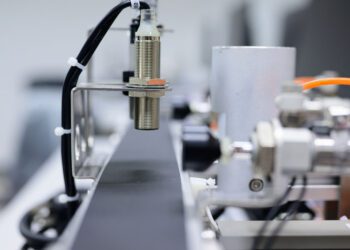In today’s digital era, the manufacturing sector is undergoing a seismic shift, driven by the rapid advancement of technologies such as artificial intelligence (AI), machine learning (ML), the Internet of Things (IoT), and cloud computing. Among these disruptive technologies, the concept of “Digital Twins” stands out as a game-changer, revolutionizing manufacturing processes and unlocking new levels of efficiency and productivity. This article seeks to decode digital twins and their transformative impact on the manufacturing industry.
What are Digital Twins?
A Digital Twin is a digital replica of a physical entity – be it a product, process, or system. By harnessing data, machine learning, and computational modeling, a digital twin mirrors its physical counterpart in a virtual environment. This allows for real-time monitoring, remote control, and advanced simulation, enabling organizations to make data-driven decisions, optimize operations, and foresee potential issues.
How Digital Twins Revolutionize Manufacturing
Digital twins are transforming the manufacturing sector in multiple ways:
- Product Development and Testing: In the product development phase, digital twins allow for comprehensive testing under a variety of conditions without the risk of damaging the physical product. This reduces the time and cost of development and helps improve the product’s quality and reliability.
- Predictive Maintenance: Digital twins enable real-time monitoring of equipment and systems, helping manufacturers detect anomalies and predict failures before they occur. This leads to lower downtime, decreased maintenance costs, and increased overall equipment effectiveness (OEE).
- Optimized Operations: By simulating different scenarios, digital twins help manufacturers optimize their processes and systems, resulting in increased productivity and efficiency. It also aids in reducing waste and enhancing sustainability in operations.
- Supply Chain Management: Digital twins of the entire supply chain can improve transparency and responsiveness, allowing manufacturers to respond to changes in demand and supply more efficiently. This aids in reducing inventory costs and improving customer satisfaction.
- Worker Safety: Digital twins can simulate and analyze risky scenarios, thus contributing to safer work environments. They can also assist in training workers for complex tasks, reducing the risk of human error.
Overcoming Challenges
While the benefits are substantial, the implementation of digital twins also comes with challenges. These include the need for substantial upfront investment, issues related to data security and privacy, and the need for skilled personnel to interpret and use the data effectively. Overcoming these challenges requires strategic planning, ongoing workforce training, and robust cybersecurity measures.
The Future of Digital Twins in Manufacturing
With the ongoing advancements in technology and decreasing costs of sensors and cloud computing, the use of digital twins in manufacturing is expected to grow significantly. According to MarketsandMarkets, the Digital Twin Market is projected to reach $48.2 billion by 2026, from $3.1 billion in 2020.
In the future, as digital twins become more sophisticated and comprehensive, they will not only simulate products, processes, or systems, but entire factories, supply chains, and even ecosystems. This will enable manufacturers to drive unprecedented levels of efficiency, agility, and innovation.
Conclusion
Digital Twins represent a significant step forward in the digital transformation of the manufacturing industry. By providing a powerful tool for real-time monitoring, predictive analytics, and advanced simulation, digital twins are set to revolutionize manufacturing, delivering increased productivity, reduced costs, and improved product quality. As manufacturers increasingly embrace this technology, the era of smart, sustainable, and highly efficient manufacturing is within reach.




















